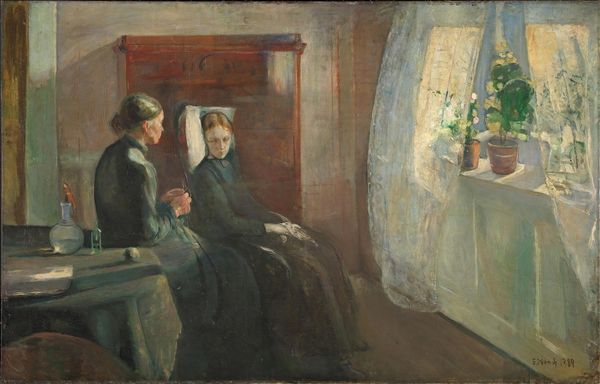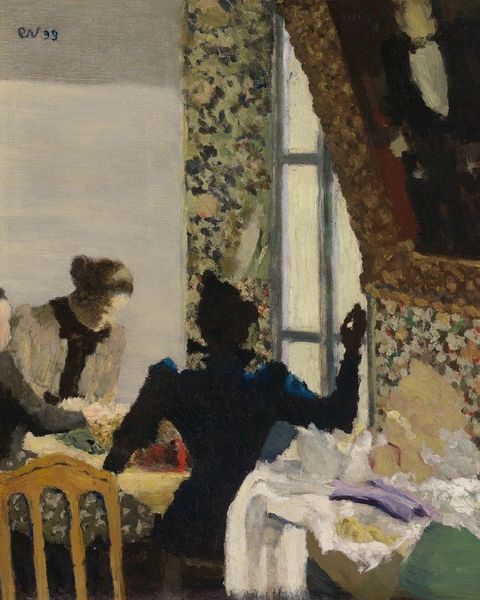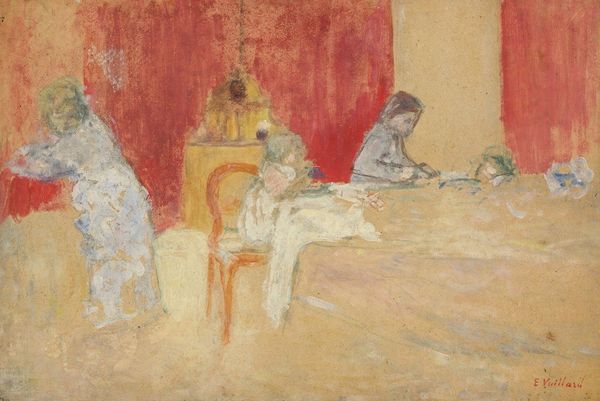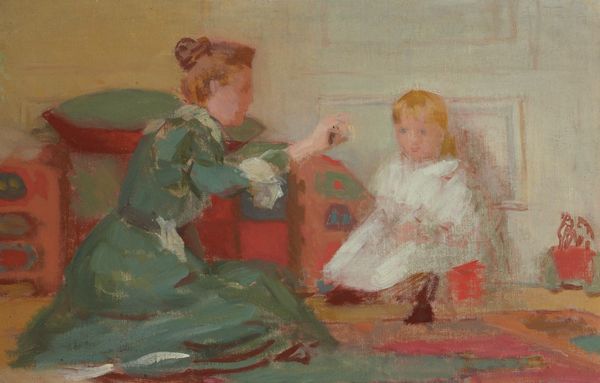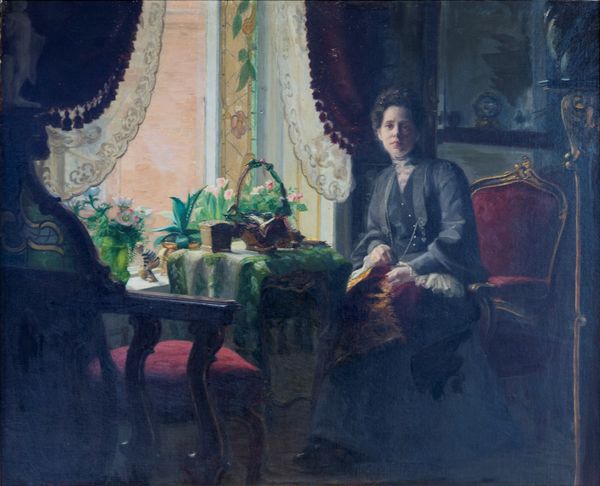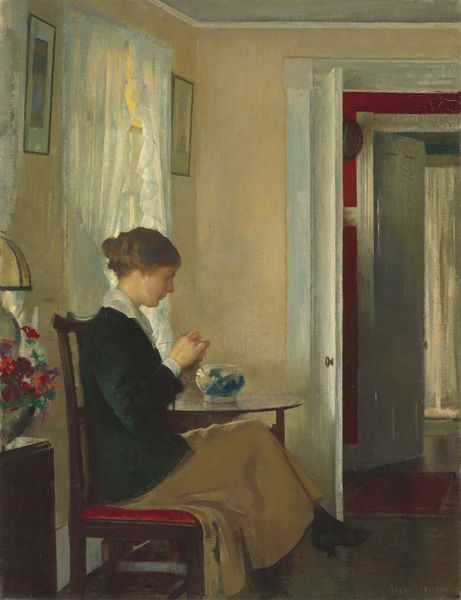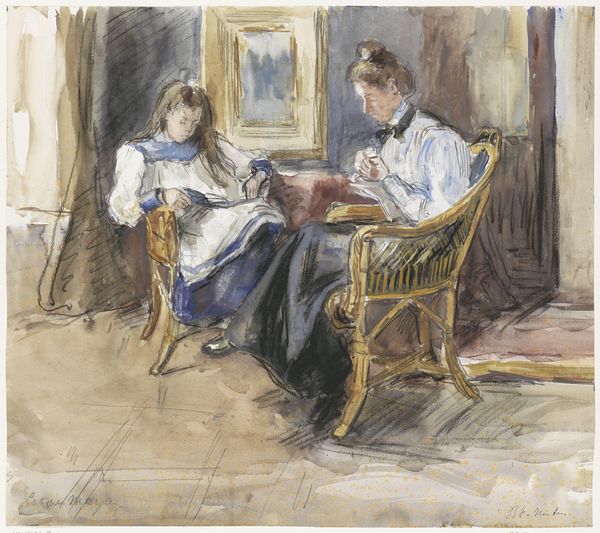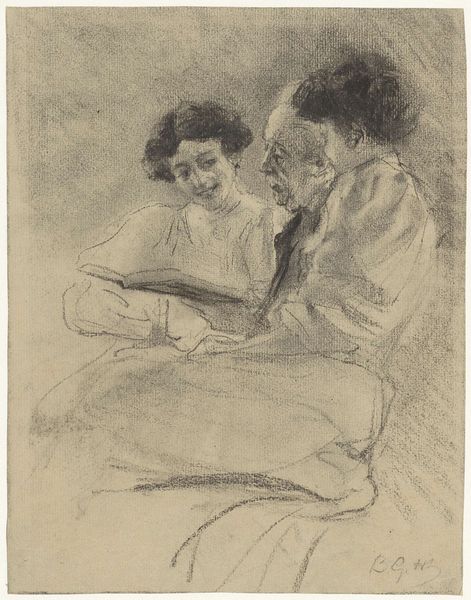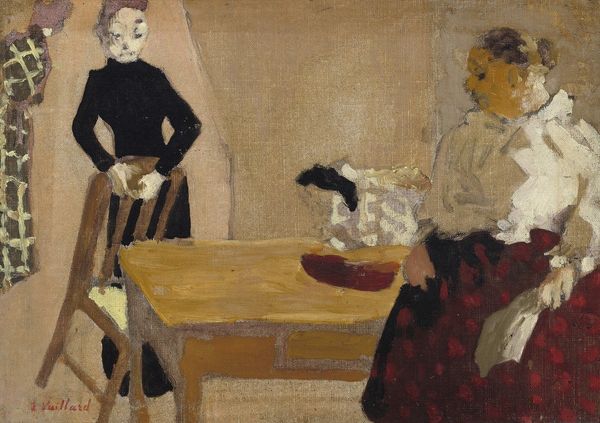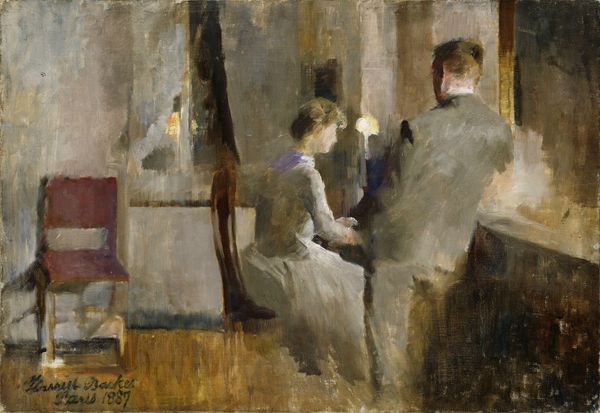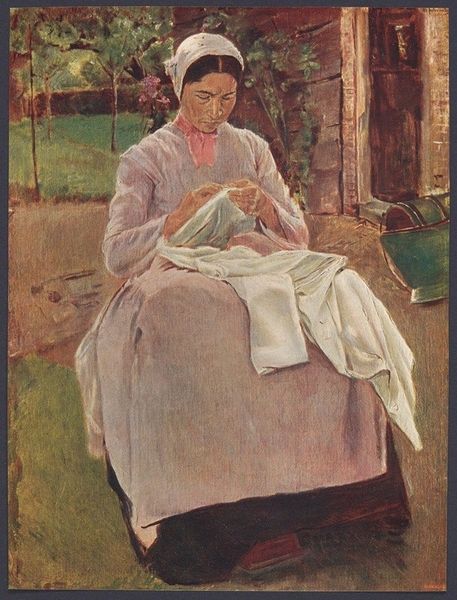
Copyright: Public Domain: Artvee
Curator: Helene Schjerfbeck's 1907 watercolor illustration, "Girls Reading," presents a serene domestic scene. What strikes you first? Editor: The subdued palette and diffused light create a sense of quiet intimacy. The almost ghostly presence of the figures, particularly the one in black, is compelling. Curator: Note how Schjerfbeck employed watercolor. There's an interesting interplay between diluted washes and dry brushstrokes, an exploitation of the medium's properties that lends a certain flatness and dreamlike feel. Also, notice how she incorporates visible pentimenti into the composition. Editor: Yes, you see her working through the piece in real-time. It reveals the making process in a refreshing way. In viewing it I’m struck by how the stark contrasts in color, the girl's white dress and dark dress on the other for instance, are emphasized using these technical decisions, and I immediately associate those strong decisions in formal rendering to the feminist movement gaining ground across the region at that point. The visual contrasts might signify changing social and political dynamics through a pictorial shorthand. Curator: That’s interesting, because in order to more fully grapple with this watercolor, the socio-economic context in which this was crafted becomes relevant. Consider the availability of materials at the turn of the century and the status of women engaging in what we might call "leisure" activities and its intersection with both class and industrial progress and mass media's contribution to women's liberation in thought. Editor: And yet, to appreciate how the materiality interacts with a tradition that, for instance, is found across some figurative portraiture as early as Holbein. But what does it *mean* beyond those material realities. Curator: But to pull back to earth from the sublime or symbolic, considering the use of such ephemeral materials—watercolor on paper, itself a cheap medium for many at that time—suggests that it also served an explicitly pedagogical purpose that involved an intimacy around what we accept or understand as portraiture. Editor: You're right to underscore that Schjerfbeck is subtly questioning conventional artistic values with this piece by calling on the symbolism around such intimate portraits. Curator: It serves as a document and, arguably, a product of industrial innovation as much as it works through the established conventions and modes that watercolor offered as an emerging format. What's special is seeing the medium so connected to those times. Editor: I agree. Ultimately, I think "Girls Reading" reveals a delicate balance between technique, form, and context that keeps me thinking of its cultural roots.
Comments
No comments
Be the first to comment and join the conversation on the ultimate creative platform.
